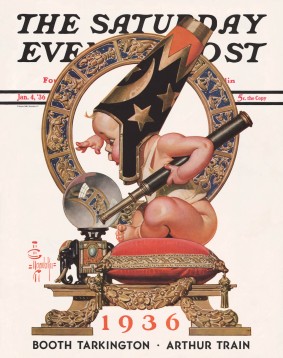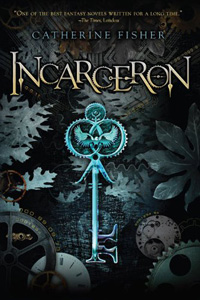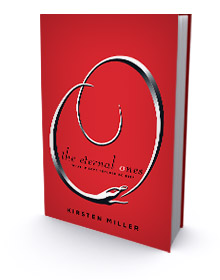A New Blog for a New Year
January 14, 2011
Vacation Time
December 13, 2010
In the City on Sunday?
December 11, 2010
If so, stop by the fabulous Books of Wonder store (18 W. 18th St.) tomorrow at noon. I will be there, participating in the Great Teen Novels event! Check out the other authors who will be there as well!
Guest Post from Author Catherine Fisher!!
December 10, 2010
WORLD BUILDING
One of the pleasures of writing fantasy is that you get to build worlds. To design universes. Tolkien called this sub-creation, and felt it was almost a mythical process, and I think I can see why. He took it to great lengths, and I don’t have that stamina, but I do know the addictive pleasure that forming a world with its own history and fauna and cosmology can give. Or in the case of Incarceron, two worlds.
My first idea for the Prison- in fact the first idea for the whole book, was ‘what if you had a prison you could hang on your watchchain?’ A striking image, literally. But from inside, it would be vast, and dark, and metallic. An echoing, violent, futuristic place smelling of oil, where even the forests are of iron. Prisons have great imagery-
locks, keys, chains, dungeons. I wanted Incarceron to have both a medieval feel and a sense of modern faceless cells, of white space. It also had to have a history, of why and by whom it was made. Finally- and this was in pretty much from the start as well- I knew it was going to be alive.
Science fiction is full of immense buildings. Think of Gormenghast, or the Dark Tower, or Pandemonium itself. I wanted mine to have a personality- one that could be wistful, cruel, dangerous, curious. Its not a new idea and I don’t claim to have invented anything, but I wanted
the Prison to be a real character. I was also thinking a bit of the medieval vision of Hell; a great mouth that swallows us all. And then there’s the Frankenstein thing. You make something, you give it life. And it turns on you.
Outside had to be completely different, to keep both me and you, the reader, interested. So the Realm is everything the Prison isn’t- light, beautiful, sunny, green, quaint, peaceful. Well, apparently. The fun with this side of the book was in building up all those seventeenth century details, and I loved describing those rooms and textures and manners. And then, slowly, subverting them. It made me realize that the past is in itself a fantasy world- we can only glimpse it in books and visit its carefully presented remains, but we can never go there. Not really. All we have is what the Realm is, a construct we have made ourselves. A fake. The Protocol is that no one actually says that, and
we all behave as if its true.
Incarceron isn’t the first world I’ve made and I hope it won’t be the last, but it will always be a special one. It was a bit claustrophobic at times, so the vision of Escape, of getting Outside, was a strong driving force. Perhaps the very greatest pleasure in making a world is getting to leave it whenever you like; being able to put the pen down,
or close the book and go downstairs and make a cup of tea.
And hope there are no small red eyes watching you.
Thanks so much, Catherine. It has been a true honor to host you on the blog! -Kirsten
You Were: The Comedienne
December 8, 2010
Your tale starts with tragedy and ends in triumph. If you were anyone else, I’d warn you to stick with the story until you reach the end. But I already know you’re the kind of lady who would.
When you were twenty years old, your beloved husband was killed in WWII. He left you with a tiny son, a one-room apartment on the Lower East Side of Manhattan, and a pile of bills. Your neighbors would have done anything to help you make ends meet. But those were hard times, and few had a dollar to spare. Still, everyone on Ludlow Street stopped by to offer their condolences. Much to their surprise, they all left laughing.
It’s not that you weren’t devastated. You mourned your first husband for the rest of your days. But you were also a girl who met heartbreak with humor. All you had to do was walk down Ludlow Street to see life was a battle. Some people fought it with their fists. Others depended on their wiles. You knew the best weapon was a good, naughty joke.
When the debt collectors began to call, you needed to find a way to support your son. So you turned to the one skill you’d had the chance to develop. You visited every talent agent in New York, hoping one could find work for a comedienne. Unfortunately, you met with a ridiculous prejudice that exists even today. Pretty girls can’t be funny, all the agents informed you, even as they laughed at your jokes.
You tried to disguise your good looks with wigs, glasses, and unflattering makeup. Nothing worked. Finally, you figured out a way to make the agents see you for who you really were. You wouldn’t let them see you at all. You stopped meeting agents in their offices and started sending greeting cards instead. They weren’t just any cards, of course. You designed them yourself, and each came with a handwritten joke inside.
One agent howled so long that he lost control of his bladder. Another opened your card on the street and was so blinded by tears of laughter that he was nearly hit by a bus. Still, no one would find you a job, and by the spring of 1945, even you couldn’t find much to joke about. Then the president died. You never figured out what inspired you to send a card to Eleanor Roosevelt. Or why she would choose your card to open. But she said it was the first thing in weeks that had made her laugh. Fortunately, she said it to a reporter from the New York Times.
A year later, you were running your own greeting card company. The debts were paid. You had a nice apartment and a nanny for your son. And the whole world seemed downright hilarious.
My Interview With Author Catherine Fisher!
December 8, 2010
I’ve been told that you don’t spend a great deal of time online. I must admit I’m both jealous and impressed. As an author, I seem to find myself with an ever-growing load of Internet-related work tasks. At times, it can be quite overwhelming. How do you feel about the growing role of the Internet in authors’ lives?
Until recently I only used the internet at the local library, and even now I have a computer I don’t really use it much. I find the internet unsatisfactory- it’s inefficient and information tends to be shallow. It also takes too much time! However I know what you mean about
its growing importance for authors, certainly in terms of connecting with readers. That’s a compromise we have to make. I suppose I feel about the internet in rather the same way the builders of Incarceron felt about the prison- we made something to serve us, but it’s gradually becoming our master.
I enjoyed every page of Incarceron and Sapphique, and I frequently recommend the series to others. But I still find it difficult to describe the entity at the center of the story. “A prison that’s alive” doesn’t do Incarceron justice. How do you describe it/him?
Thanks for recommending the books. Personal recommendations are always so enthusiastic- you just want to go out and get them. As for the Prison, it’s definitely another character in the book. From the first I wanted it to be alive and a real personality. I call it an intelligence. I really enjoyed the idea of this perfectly designed system warping slowly out of control. Perhaps it’s a fallen angel.
I want to ask what inspired these books, but I know that the answer to that sort of question is rarely short or simple. Is there a single moment of inspiration that you might be able to share?
I met someone who worked in a prison. It was just a brief conversation but the word PRISON just kept echoing in my mind. It linked it with an exhibition I’d seen a while before of Piranesi’s engravings of imaginary prisons. As you say, all sorts of things go into a book, but maybe those were the real triggers.
I’ve heard people describe this series as “steampunk.” How do you feel about that label?
I’ve heard that too. I’m not sure I really know what the term means- a sort of old-fashioned futuristicness? There are so many terms and categories- sometimes they don’t do books a great service. Like teen, and YA. Every label excludes someone. I prefer to think of the series as just books. Literature, hopefully.
Each chapter begins with a quote from another text. Do the Songs of Sapphique exist? Have you written King Endor’s Decree?
As you know, presenting information about the back story without boring everyone is one of the great headaches of a book like this. So the chapter quotes are my way of doing it. I really enjoy writing them- I usually do them last- and trying to get information in obliquely, or some sort of comment on the story. I like using different forms of writing, and I especially like writing the poems. I have to confess that neither the Songs of Sapphique nor King Endor’s Decree nor any of the others exist fully. Just the bits in the books.
I would imagine there are quite a few estates in Britain where one might easily recreate a world from the past. Did any such places serve as models for the Wardenry?
Britain is full of places that might be the Wardenry. I don’t think I used anywhere specific, but took aspects, like the moat, etc from various places. It’s hard to say because these houses and estates are so familiar. I even went to school in a Jacobean house which was just our school then but has now been refurbished and opened to the public. That had a lake with woods round it, and that is certainly the lake at the Queen’s Court. So, as usual, a patchwork of influences.
I was quite taken by the relationship between Claudia and her tutor, Jared. Were there real sparks between them—or was I imagining things? (That has been known to happen, unfortunately.)
I don’t know the answer to this. The answer is different for every reader, including me. The hints are there- make of them what you will, is what I usually say. Personally, I think Jared has other things on his mind. I find it interesting that we always feel there is a ‘real’ answer
to the relationships between characters, or what happens after the book ends, and that the writer has that answer. I don’t know about you, but I think if it isn’t in the book, it’s anybody’s guess.
Many thanks for your questions, Kirsten, and congratulations on The Eternal Ones. I really enjoyed it very much.
My Review: Incarceron & Sapphique
December 6, 2010
I’m going to be honest with you. I have no idea how to describe this series. And from what I’ve read, other reviewers seem to have the same problem. Incarceron and Sapphique are unlike any books I have ever cracked open. But I do know how to describe their author. Catherine Fisher is a genius. I am absolutely in awe of her imagination and talent.
The series begins with Incarceron. You must read it first, or you will find yourself hopelessly lost. The world in which these stories take place is so strange that even the heroes and heroines aren’t quite sure what’s real and what isn’t.
The saga begins with a boy named Finn who is trapped in a prison that’s a world of its own. Incarceron, as its known, is immense. No one knows where its boundaries lie. There are fiery landscapes, copper forests with razor-sharp leaves, nightmarish cities, and bottomless chasms. But there are no guards keeping the inmates inside. There’s no need for them. Incarceron was designed to monitor its own prisoners. It’s more than just a prison. It’s alive. And in the centuries since its creation, only one man has ever escaped—the legendary hero whose name is Sapphique.
Finn dreams of following Sapphique to freedom, but in his heart, he holds little hope of ever seeing the stars. Then he discovers a crystal key that allows him to communicate with a girl who claims to live Outside. Claudia’s father is the warden of Incarceron, and she’s long been betrothed to the future king of her land. But while her life is one of great privilege, she’s as much a prisoner as Finn. And the beautiful world in which she lives—the one Finn calls Outside—can be as dangerous and terrifying as the darkest chambers of Incarceron.
Finn and Claudia know they each hold the key to the other’s freedom. Claudia can help Finn escape from the prison. Finn can release Claudia from an unwanted engagement. But their freedom may come at a terrible price—the destruction of their two worlds and the deaths of all the people they love.
That’s my sorry attempt at synopsis. Believe me when I tell you that it doesn’t do these books justice. Incarceron and Sapphique are as rich, weird, and remarkable as Philip Pullman’s Golden Compass trilogy. (Three books other books that can’t be synopsized.) All I can say is, READ THEM!
And the Next Volunteer Will Be . . .
December 5, 2010
The next Past Life Reading will post on Tuesday. I have a little something special planned for tomorrow.
In the meantime, check out my interview with author and blogger Myra McEntire, here.
And all this week, BEST I’VE READ 2010 will feature author posts and book giveaways. (400 books will be given away between December 6th and 14th!) There will also be a GRAND PRIZE GIVEAWAY on the website. So don’t miss it!
You Were: The Miner
December 1, 2010
You were born in the sixteenth century in what is now northeastern Afghanistan. Your family, descendants of Alexander the Great, had ruled the land for centuries. On the day you were born, your grandfather was murdered and another man seized the throne. By the time you reached your teens, your once wealthy family’s sole source of income was a tiny mine. That single hole in the ground would eventually bring you both fame and fortune.
Lapis lazuli is one of nature’s miracles—a stone so perfectly blue that it looks as though it must have fallen straight from the heavens. That’s why the ancient Egyptians offered it to their dead. Why Buddhists decorated their most magnificent temples with it. And why many Renaissance painters would have murdered their mothers for a small bottle of the heavenly pigment made from ground lapis lazuli—a color they called ultramarine.
The problem was, lapis lazuli doesn’t fall from the heavens. It has to be dug up in mines. And the best mine in the world was the one owned by your family.
Since your grandfather’s death, your life hadn’t been easy. Your parents had both been raised in luxury and had no idea how to navigate the real world. Who knows what might have happened to them if they hadn’t produced a marketing genius.
When you were thirteen, you got tired of all their moaning and decided to take control of the lapis lazuli mine. That’s when you discovered just how bad things really were. The hole produced a handful of stones each month. They were exceptionally pretty and unusually blue. But the day you went to the market with them, you found yourself just one of a hundred people trying to sell pretty blue rocks.
Later that afternoon, your father almost fainted when he found you grinding a month’s worth of stones into a fine powder. When you had finished, you poured the powder into a small glass bottle and returned to the market. You sat there for two days with the bottle in front of you. Finally a man approached. He was an artist, and he wanted the ground lapis lazuli to use for paint.
“No,” you said. “This is the finest ultramarine in the entire world. I won’t sell it for any price until I know if your work is worth it.”
Word spread quickly that a young woman in Afghanistan was selling the world’s best ultramarine. In less than a year, the great painters of Italy were sending representatives to see you. You refused to sell them your wares since you’d never seen their work. Their royal patrons begged you to reconsider. Even the Pope sent an emissary. Finally one painter made the long journey to see you himself, with several of his canvases strapped to his mule. You’d seen work that was just as good, but you’d never seen anyone quite like him before.
The two of you lived in Italy for the rest of your lives, rich, respected, and surrounded by your favorite color.








